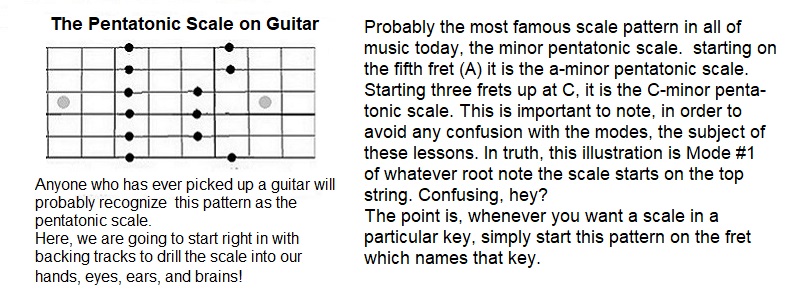Lesson Review and Summary
Have I suceeded in demonstrating the idea that the scale does not change, only the position of the starting notes. Our task is to learn those five modes so that we can start our scale on any one of the five notes on the pentatonic scale, picking up at the point of entry, continuing the same pattern from there.
We are not finished, yet; not by a long shot. Our first task is to learn the pentatonic scale in the first modular step pattern, which is (Root) + (1&1/2 steps) + (Whole step) +
(Whole step) + (1&1/2 steps) + (Whole Step to the Octave.) Mode #1, below, is one of the most widely circulated fret diagrams on the internet. Let's take a close look at it.

In the drill on the next page, we will develop the skill of quickly shifting keys while soloing the pentatonic scales in Mode #1. When the backup is in C-major, the guitarist will play in the key of the relative minor, A-minor pentatonic. When the chord
changes to G-major, the guitarist will change to the E-minor pentatonic.
When the chord changes to F-major, the guitarist changes to D-minor. Once again, the sixth degree
of the scale is the relative minor.(continued)
